POWER, Cyril Edward
Cyril Edward Power was born at Redcliffe Street, Chelsea on the 17 December 1872, eldest child of Edward William Power (1840-7 August 1936), an architect, and his first wife Amelia Poole née Berry (5 July 1841-1891), who married at St George's Church, Hanover Square, London on 23 August 1869, Edward married secondly in 1893, Ada Sarah Barnes (1859-1932). Cyril studied architecture in his father's office and in 1900 was awarded The Sloane Medallion by the Royal Institute of British Architects for his design for an art school. Cyril married at St Edmund's, Bury St Edmund's, Suffolk on 27 August 1904, Dorothy Mary Nunn, shortly afterwards they moved to Putney where their son, Edward Raymond Roper (22 November 1905-26 May 1990) was born the following year, they went on to have three more children, Cyril Arthur in 1908, Joan Margaret Roper 1914, both born in London and Edmund B. in 1921, who was born back in Bury St Edmund's. Power worked as an architect at the Ministry of Works under Sir Richard Allington and was involved with the design and construction of the London General Post Office. In 1908 the family moved to Catford around which time, Power became lecturer of Architectural Design and History at the School of Architecture, University College, London (now the Bartlett School of Architecture) under Professor John Simpson. He was also a lecturer at Goldsmiths College, New Cross, London which led to publication of his 'History of English Mediaeval Architecture' (3 vols. 1912) which features 424 of his own ink and pen illustrations and detailed designs. 1914 saw his commissioning into the Royal Flying Corps and management of the repair workshops at Lympe Aerodrome on the Kent coast. After demobilisation, the family returned to Bury St Edmund's where Power resumed his architectural practice, which included alterations and additions to Chadacre Hall Agricultural College for Lord Iveagh and the beginning of his move into creating artwork, producing watercolour landscapes and townscapes as well as dry points. He exhibited at the Royal Academy and was a member of Ipswich Art Club 1921-1925, exhibiting from 4 Crown Street, Bury St Edmund's in 1921 two watercolours, 'A Lonely Road' and 'St Mary's Church, Bury St Edmund's' but from 1924 he exhibited from Crescent House, Angel Hill, Bury St Edmund's. December 1921 saw the birth of his youngest son Edmund, in which year was his first meeting with Sybil Andrews, with whom he maintained an informal working relationship which lasted for some 20 years, and they had their first joint exhibition in Bury St Edmund's. About 1925, Power and his family moved to St Albans, Hertfordshire and Power enrolled at Heatherley School of Fine Art, London and was elected a Fellow of the Royal Historical Society. Power also helped Iain McNab (1890-1967) and Claude Flight (1881-1955) set up The Grosvenor School of Modern Art in Warwick Square, London with Sybil Andrews becoming the School Secretary with Power a principal lecturer and around this time he and Sybil Andrews began co-authoring prints under the name Andrew Power. In 1930, Power was elected member of the Royal Society of British Artists and established a studio with Sybil Andrews in Hammersmith, a location which inspired many prints by both artists, most notably 'The Eight' by Power and 'Bringing in the Boat' by Sybil Andrews. A major joint exhibition was at the Redfern Gallery in 1933 consisting of linocuts and monotypes and the following years saw many more joint exhibitions until the dissolution of their informal partnership in July 1938 when they gave up their London studio. Power re-joined his family who had moved from Hertfordshire to New Malden in Surrey and on the outbreak of World War II, Power was attached to a Heavy Rescue Squad as a surveyor, based at Wandsworth Town Hall but continued drawing and painting. He also spent time lecturing on painting and lino-cutting to the local art society at New Malden and at Kingston-upon-Thames. During the last year of his life Power completed some eighty-nine oil paintings, landscapes of the surrounding areas, often Helford River and the Falmouth area of Cornwall as well as some floral studies. Cyril Edward Power died at 24 Howard Road, New Malden, Surrey on 20 May 1951, aged seventy-eight. He signed his works 'Cyril E. Power'.
Royal Academy Exhibits
from 97 Queen Victoria Street, London, EC.
1896 1640 Perspective View...alterations, decorations &c, St Cuthbert's, South Kensington
1660 Proposed High Altar and Reredos, St Cuthbert's, South Kensington
1756 Study...organ-case, St Cuthbert's, South Kensington
from 59 Great Ormond Street, West London
1898 1764 Houses at Walton-on-Thames
from 28 Great Ormond Street, West London
1900 1741 Study for a Pulpit
Works by This Artist
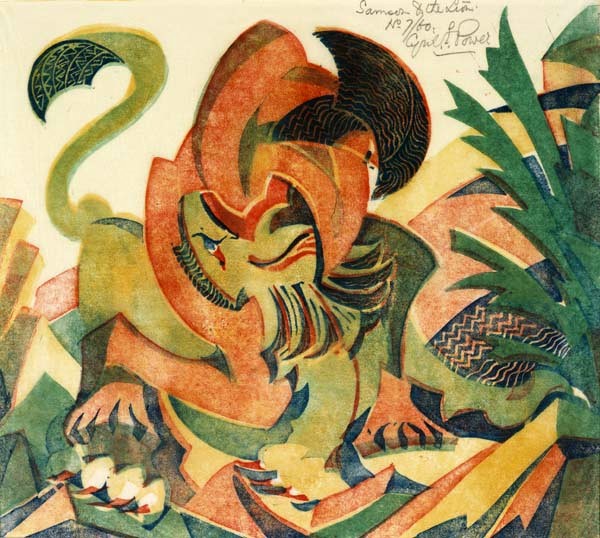
|
Samson and the LionLinocut
|
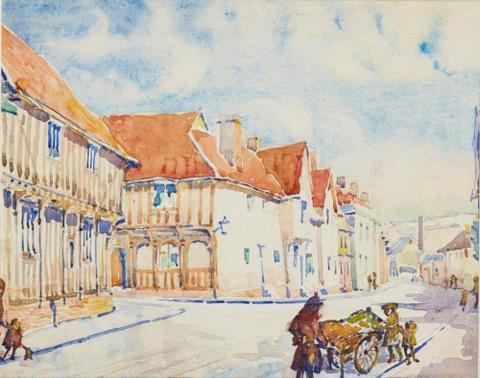
|
Lavenham, SuffolkWatercolour and pencil
|
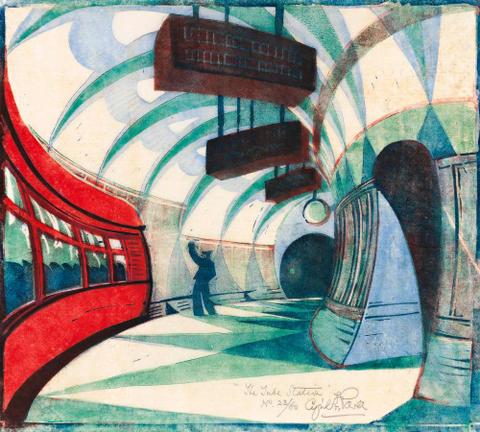
|
The Tube StationLinocut
|
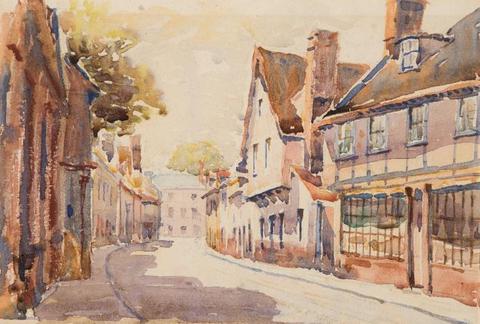
|
Guildhall Street, Bury St Edmund'sWatercolour
|
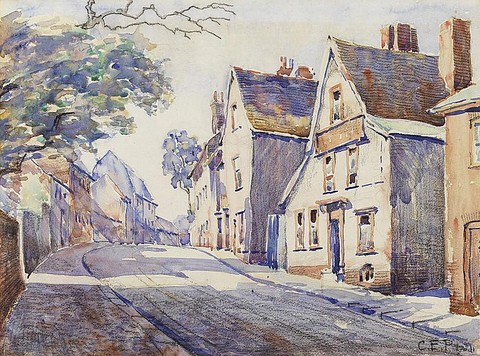
|
Bury St EdmundsWatercolour on paper
|